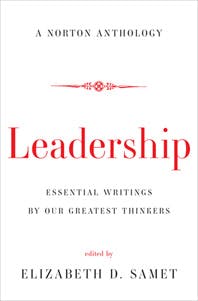Next month marks four years since Occupy Wall Street tumbled onto parks and town squares and onto the American consciousness. The dream of 99 percent solidarity was birthed by the euphemistically labeled Great Recession: housing fraud and foreclosures, mass unemployment, and the bank bailouts that made clear who’s boss. But for a short time in Manhattan’s Zuccotti Park, dozens, hundreds, and then thousands of people left behind all the bosses they knew, opting instead to imagine a more democratic, horizontal society. It’s the same flat, “leaderless” structure we’ve since seen in the Fight for $15 and, more recently, Black Lives Matter, movements that have responded to lethal institutional failures.

The success of these leaderless campaigns—in steering the public discourse and winning criminal justice reform, deferred action for undocumented immigrants, and increased minimum wages—has made the establishment nervous. “Crises of leadership are the order of the day at the beginning of the twenty-first century,” writes Elizabeth C. Samet in her introduction to a new Norton anthology, Leadership: Essential Writings by Our Greatest Thinkers. “[O]ur institutions seem to be in serial meltdown,” she observes, yet we blithely indulge in our “addiction to the twenty-four-hour news cycle, multiple information streams, and constant simulation.” Rather than feeding on this crisis, we must slow down, read, and think.
Samet, an English professor at West Point since 1997, has become something of a leadership theorist. Her three previous books consider the making of leaders and the profound consequences of their authority in military and civilian life. In No Man’s Land: Preparing for War and Peace in Post-9/11 America (2014) and Soldier’s Heart: Reading Literature Through Peace and War at West Point (2007), she reflects on the power of the humanities to train and challenge “future leaders”—her young students, some of whom never return from war. She is aggrieved by the seemingly perpetual conflicts that claim their lives, yet her idea of leadership cannot abide rebellion. The same goes for her earlier, academic volume, Willing Obedience: Citizens, Soldiers, and the Progress of Consent in America, 1776–1898 (2004), an intellectual history of submission to authority in our young, experimental state. Here, too, her conceptual framework is rigid: elite leaders versus proletarian followers.
Unlike a binder-thumping lieutenant or a slick, Chiclet-teethed motivational speaker, however, Samet believes in training leaders through “the work that serious literature compels a reader to perform.” The book comprises an erudite scan of fiction, journalism, speeches, anthropology, scripture, letters, songs, and the occasional poem organized under such weighty headings as “Cultivating Trust,” “Learning from Failure,” and “Disciplining Desire” and in shorter groupings focused on characteristics—persuasiveness, concentration, knowing when to wait—no leader can do without. Michel de Montaigne’s essay “Of Cannibals” (1580), for example, is chosen to illustrate a good leader’s perspicacity. The text analyzes a Brazilian tribe’s ritual violence, then holds a mirror to the French: “I am not sorry that we notice the barbarous horror of such acts, but I am heartily sorry that, judging their faults rightly, we should be so blind to our own.”
Samet relies heavily on Western classics, New Yorker articles, and texts with a feminist gloss; she begins with South African Bessie Head and invites Melville, Wallace Stevens, Ovid, Elizabeth I, Martin E. Dempsey, Marcus Aurelius, Anne Fadiman, Woody Guthrie, Shakespeare and Joan Didion to weigh in along the way. The non-Western selections tilt toward Mencius, Lao Tzu, and Zen Buddhism, favored touchstone of the C-suite-meets-mindfulness set (think Arianna Huffington and Steve Jobs). Writers of color are likewise canonical: Martin Luther King, Jr., Gandhi, Frederick Douglass, and Nelson Mandela. There is no Audre Lorde or Eldridge Cleaver.
Despite her use of the humanities, however, Samet’s anthology reflects a traditional view of authority. With a few exceptions (notably, George Orwell’s anti-colonial essay, “Shooting an Elephant” [1936] and a profile of dancer Isadora Duncan), her chosen excerpts and annotations leave prevailing notions in tact: Leaders have titles and sit atop hierarchies; they’re in power for a reason. A leader is Abraham Lincoln writing to Ulysses S. Grant in wartime. Or it’s restaurateur Barbara Lynch, who has risen to the top in a world where it’s “less likely for a woman to be hired as a head chef than as a C.E.O.” Samet’s leaders typically operate in a chain of command: As she writes in an introductory note to the chapter, “Risking Revision,” they “will have to consider whether the most enduring changes come from above or below and how to implement new ideas in a potentially resistant organization accustomed to doing things a certain way.”
The anthology is pedagogical, above all: the extracts cross-referenced by field of interest, supplemented with recommended reading lists and thoughtful discussion questions geared toward the classroom. I can imagine this book as filling the higher-brow required-reading slot of college and graduate-level courses on business, management theory, human resources, and organizational psychology. A little Plutarch and Tolstoy to balance out Getting to Yes: Negotiating Without Giving In and The 7 Habits of Highly Effective People. Outside the academy, Samet’s picks will surely appear in future PowerPoint presentations and on the bookshelves and coffee tables of innumerable corporate suites.
Which is to say, I am not this book’s intended audience. Though Samet avoids the worst kinds of corporate-speak and inspirational vernacular, she fails to escape the grip of business-ese. “Tangible action soothes while invisible contemplation provokes suspicion;” “Leaders who believe they can legislate against failure tend to create climates in which entrepreneurial spirit is muzzled,” she writes. The excerpt of Mission Command (2012) by General Dempsey, chairman of the Joint Chiefs of Staff, purports to explain a comprehensive doctrine of trust but reads as gobbledygook: “In its highest state, shared context and understanding is implicit and intuitive between hierarchal and lateral echelons of command, enabling decentralized and distributed formations to perform as if they were centrally coordinated.”
It’s unfortunate that such turns of phrase stop me cold, because I care and think about leadership a great deal. Outside my successive day jobs, I’ve been an activist in various labor movements — both as a union member and a supporter of low-wage workers. The purpose of rank-and-file worker organizations is, of course, to “fight the power” (and redistribute resources), so we’ve tried to avoid the trap and trappings of The Boss. We’ve had leaders and representatives, if not always elected officers, and never a commander or CEO.
What I’ve learned through these groups is that leadership can be open-ended and collective. In a workplace-organizing campaign, members might rotate through various roles — from facilitating meetings to taking notes to speaking to the press. Some will be naturally shy; others, congenitally gregarious. You might be more involved in the winter than in spring, and you don’t need a title to save your place. It’s admittedly the kind of democracy that gets unwieldy with size, but there’s no truer laboratory of leadership. As the writer William Deresiewicz (who, incidentally, was invited by Samet to speak at West Point in 2009) recently observed in Harper’s, the problem with the orthodox idea “that society should be run by highly trained elites, is that it has usurped the place of ‘citizenship,’ the notion that society should be run by everyone together.”
For those interested in social movements, Samet does include a chapter, “Resisting the System,” that collects historical examples of the “courage to resist oppression.” There we find such notable rebels as Moses, 14th-century English peasant Wat Tyler, Mary Wollstonecraft, and socialist Eugene V. Debs, along with a collection of lyric “songs of resistance” and two revolutionary poems. I wonder what Samet’s students would say about this apt passage she plucks from A Vindication of the Rights of Woman (1792):
Standing armies can never consist of resolute, robust men; they may be well disciplined machines, but they will seldom contain men under the influence of strong passions, or with very vigorous faculties. And as for any depth of understanding, I will venture to affirm, that it is as rarely to be found in the army as amongst women; and the cause, I maintain, is the same.
That cause, writes Wollstonecraft, is the tyranny of a system that deprived soldiers and women alike of a real education, consigning them to “acquire manners before morals.”
In a sense, the same could be said of our leaders, who seem increasingly content to perform, rather than earn, their authority. Samet notes “that the American people’s trust in government has declined from a high of 70 percent in 1958, during the Eisenhower administration, to a near-record low of 19 percent, during the government shutdown of 2013.” This is not a linear decrease, and some eras are simply more credulous or less obedient than others. There may indeed be a “crisis of leadership” in our turbulent time, but judging from the presidential race we’ve seen to date, it’s a crisis We the People will have to resolve on our own.
